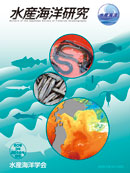Volume 80, Issue 3
Displaying 1-4 of 4 articles from this issue
- |<
- <
- 1
- >
- >|
Original Papers
-
2016Volume 80Issue 3 Pages 199-206
Published: August 25, 2016
Released on J-STAGE: March 17, 2022
Download PDF (953K) -
2016Volume 80Issue 3 Pages 207-213
Published: August 25, 2016
Released on J-STAGE: March 17, 2022
Download PDF (833K) -
2016Volume 80Issue 3 Pages 214-221
Published: August 25, 2016
Released on J-STAGE: March 17, 2022
Download PDF (1034K) -
2016Volume 80Issue 3 Pages 222-230
Published: August 25, 2016
Released on J-STAGE: March 17, 2022
Download PDF (1627K)
- |<
- <
- 1
- >
- >|
